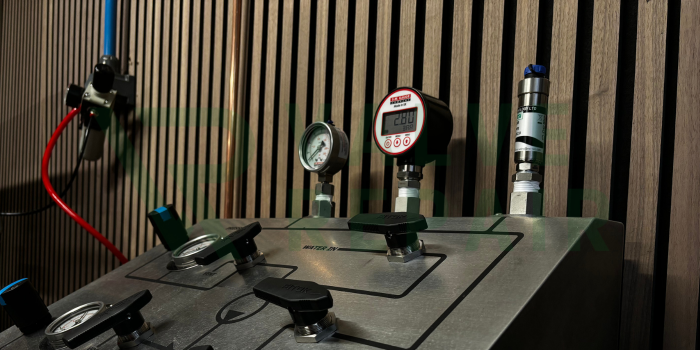
Valve Pressure Testing
What is Valve Pressure Testing?
Valve Pressure Testing is a critical quality control process that evaluates whether a valve can withstand operational pressures without leaking or failing. By simulating real-world conditions, we can identify potential weaknesses and confirm that your valve is ready for safe, long-term use.
- Prevents Costly Failures – Avoid downtime and potential system damage.
- Ensures Compliance – Meets industry safety and operational standards.
- Extends Valve Lifespan – Detects issues early to prevent long-term damage.
- Reduces Risk – Guarantees valves can handle required pressure loads.

Our Valve Pressure Testing Process
At Valve Repair, we use specialised testing equipment to assess your valve’s integrity under controlled conditions. Our testing methods include:
Hydrostatic Pressure Testing
- The valve is filled with water or another test fluid and pressurised to check for leaks.
- Pressure is applied above operating levels to ensure structural integrity.
- Ideal for checking body strength, seat tightness, and overall durability.
Pneumatic Pressure Testing
- Uses compressed air, nitrogen, or inert gas to test valve tightness.
- Detects minor leaks that may not be visible in hydrostatic tests.
- Often required for high-precision applications where gas-tight sealing is essential.
Functional & Seat Leak Testing
- Ensures the valve seats completely seal when closed.
- Measures pressure loss and verifies zero leakage under specific conditions.
- Helps diagnose worn seals, internal damage, or improper seating.
Certification & Reporting
- Every tested valve comes with a detailed report outlining performance results.
- Compliance with industry safety regulations and customer specifications.
- Recommendations for repairs, refurbishments, or ongoing maintenance if required

How it works...
Types of Valves we repair
-
Ball Valves
Ball valves play a crucial role in process control, offering tight shut-off and minimal pressure drop. Over time, seal degradation, corrosion, and internal wear can lead to leaks and operational inefficiencies.
-
Butterfly Valves
Butterfly valves are widely used in steam, water, and industrial flow applications, but seat wear, disc misalignment, and actuator failures can impact their performance.
-
Gate Valves
Gate valves are designed for on/off flow control but can suffer from seat erosion, corrosion, and sticking mechanisms over time.
-
Globe Valves
Globe valves are essential for flow modulation and throttling applications, but plug and seat wear, erosion, and actuator issues can reduce efficiency.
FAQ's
What is valve pressure testing, and why is it important?
Valve pressure testing is a quality control process that ensures your valves can withstand operational pressures without leaking or failing. It helps prevent costly breakdowns, safety hazards, and system inefficiencies, ensuring your valves perform reliably under real-world conditions.
What types of pressure testing do you offer?
We offer three main types of pressure testing:
- Hydrostatic Testing – Uses water to check for leaks and structural integrity.
- Pneumatic Testing – Uses compressed air or gas to detect even the smallest leaks.
- Seat Leak Testing – Ensures a tight seal when the valve is closed, preventing internal leakage.
How often should valves be pressure tested?
The frequency of pressure testing depends on the type of valve, application, and industry regulations. In critical applications such as steam, oil & gas, and chemical processing, valves should be tested at regular intervals to ensure ongoing reliability and compliance with safety standards.
What happens if my valve fails the pressure test?
If a valve fails testing, we provide a detailed failure report outlining the issue. Our team can then recommend repairs, refurbishment, or replacement parts to restore the valve to full working condition, ensuring it meets performance and safety requirements
